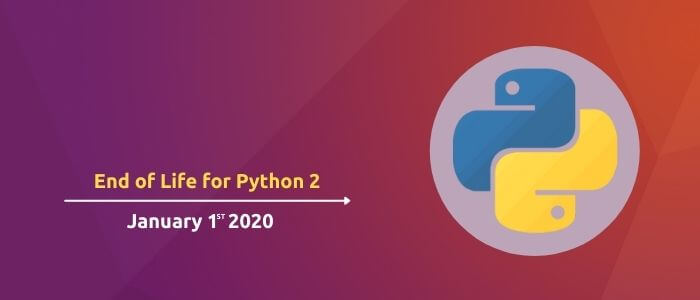
Python is more than just a programming language. It is the top choice of developers, fundamental to machine learning among many other things. When Guido van Rossum created Python in the 1990s, little did he know that his creation would gain such popularity worldwide. And one day became the most used programming language. Be it the flexibility of the language, the open source nature or the ease of understanding. Python is a developer's favorite for more than one reason.
Python’s Year 2019
Looking back on the year, 2019 has been the year of Python in many ways. Initially, it became the world's most popular programming language, beating JAVA according to the IEEE Top Programming Language Rankings. Another reason Python made the news this year was because version 2 is at the end of its life. Python 2 is being retired as we enter the new year on January 1, 2020. No further updates will be released to Python 2 beyond this day, and no security fixes will be made even if someone finds a security problem with it.
With half a month left in the year, organizations must do something if they want their applications to stay relevant. But, even though Python 2 retirement was announced in 2014, most organizations are still hooked on it and have never moved to the latest version. And there are many reasons why this happened. When Guido van Rossum first announced in 2014 that Python version 2 was coming to an end, 2020 felt so far away. Most enterprises put off migrating to Python 3, some didn't like the new update, while others faced more than a few challenges in migrating.
Resistance to Python 3
Python 3 faced huge resistance from developers and enterprises around the world. It was mainly due to the following reasons:
- Python 3 had only one intuitive way of doing things compared to Python 2, where developers could complete a task in more than one way.
- The sub-par performance of Python 3 was disliked.
- Python 3 had an initial lack of support for third-party tools and libraries.
- There were a few backward compatibility issues with Python 3 etc.
Even though Python 3 was launched in 2008, it was difficult for the Python Software Foundation to convince people to migrate to this version. But, rarely have they noticed that the new version is the language's way of moving forward with evolution. Python 2 had major improvements, along with a bunch of new features in Python 3.
Seeing that many organizations were not migrating to Python 3, Guido van Rossum rang the alarm bells in March this year. He pointed out that no games should be played with economics. The situation with Python 2.7 was clear because from January 1, 2020, there would be no updates, not even source-only security patches. In other words, support from core devs, PSF and Python.org will cease to exist.
Is it a Do or Die Situation?
No matter how much you admire Python 2, as an organization, you will have to migrate to Python 3 today or tomorrow. It's a do or die situation until you take a step in that direction. If you haven't done anything to date to move your application to Python 3, here are a few hacks you can try:
Start the Transition
While it may seem like a complex task, migrating to Python 3 is easier than the hype surrounding it. The best part is that Python's official documentation has everything you need to know to make the transition successfully. For starters, you can use the 'caniusepython3' package to help identify areas in your application that might block porting to Python 3.
Analyze Closely
The sooner you accept the migration to Python 3, the better you will be able to implement the actual process. Start by analyzing your application and finding the smallest areas that have their dependencies on Python 2. Once you identify this, find compatible solutions for Python 3 and start rebuilding your application from the inside out. One of the biggest myths is that Python 3 is not backwards compatible. It was not in its early days, but now that the migration problem is better understood by experts. And the Python Software Foundation itself, migrating to Python 3 is easier than ever.
Purchase Support from Third-Party Vendors
If you want to stick with Python 3 for a long time. You can only purchase extended support from a third-party vendor or Python Software Development Company. For example, Active State is a third-party vendor that provides business support to enterprises and developers who want to continue using Python 2. Alternatively, users can also purchase products that contain Python 2 as part of their presence in another supported product.
Third-Party Runtimes
As a workaround, you can also switch to a different runtime for Python 2. Third-party runtimes, such as Cython, Tauthon, PyPy, and IronPython, offer extended support windows for versions, giving you a little more time to prepare for Python 3.
Conclusion
Like it or not, Python 3 is here as part of the next generation of Python software development. Choosing to stay with Python 2 is ultimately your choice, but you will put more effort into maintaining it. Then innovate your application and understand your customer's demand. You can try these temporary solutions to buy yourself some time and start preparing for the transition as soon as possible. Traveling with technological advancements is the way forward!
Recent Blogs
Categories



